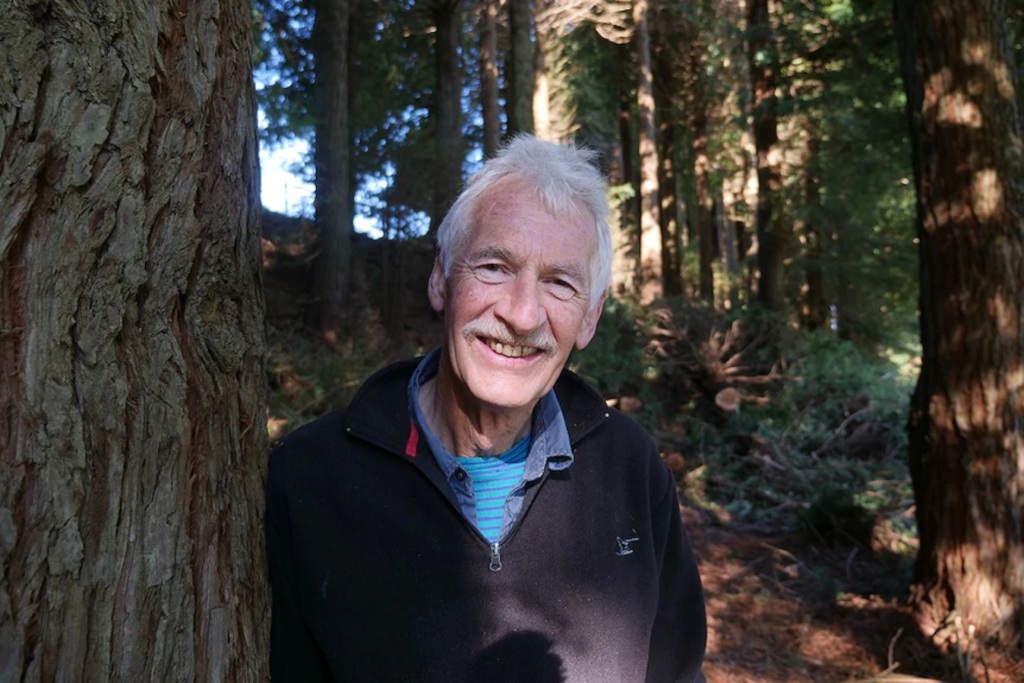Freeman Interview

Hi Graham,
Congratulations on winning the Tasmanian Tree Farmer of The Year 2021 Award.
It’s a prestigious award!
1. Firstly can you give my readers some background? How did you get into farming and into growing trees?
I was raised on my parents farm and for as long as I can remember I wanted to farm and own an area of land and bush. I got into growing trees for their aesthetics and the environmental benefits they provide.
Our farm (Judy, my wife and I) is broken up by a series of short steep drops running basically North to South and were covered in bracken fern and blackberry. The prevailing winds are west/southwest so these banks seemed a percect place to provide erosion control and wind protection. Providing shelter was our primary aim in planting trees.
2. What tree species are you growing and why? How much of your farm is dedicated to growing trees?
I wanted to grow a variety of species (probably too many) that I was interested in and thought may grow reasonably well in our climatic conditions.
Species include: Sequoia Sempervirens, Eucalyptus Regnans, Pinus Radiata, Cupressus Macrocarpa, Cupressus Lusitanica, Cupressocyparis Leylandii, Thuja Plicata, Psuedotsuga Menziesii, Chamaecyparis Lawsonia.
Approximately 14 hectares is plantation. Native bush is predominantly backwood.
3. Do you enjoy growing trees?
Yes I enjoy growing trees and I find it very satisfying and fulfilling.
4. Can tree growing be a profitable addition to a farm enterprise in Tasmania?
Tree growing can be a profitable addition to a farming enterprise. We have profitably harvested Blackwood (non plantation). Personally harvested and sold a small plantation of Radiata that was on the farm when purchased. We have just completed a profitable thinning and on site milling of our oldest redwood plantation.
5. As a tree farmer how much support and interest do you get from the local forest industry and wood markets?
As growers of mainly small lots of specialty timbers I dont consider we fit the normal profile for local timber markets, however have had local interest in Redwoods, and can always sell Radiata.
6. How much do you know about wood markets, supply, demand and prices? Is this information readily available to you?
Finding a transparent comparison of prices can sometimes be a little difficult. There are established markets for Radiata, however there are no established markets for Redwoods. C. Macrocarpa is attracting interest, however there is currently no transparent pricing for it.
7. As an award winning tree farmer do you think the market will now sit up and take notice and support and reward your efforts? In other words does the Award have any leverage in the marketplace?
I honestly do not know if the award will provide any leverage in the market place, however this should not be a negative.
8. Can you tell me where you think farm forestry will be in Tasmania in 20 years? Will it be a thriving profitable business or will it continue to struggle as it has for the past 50 years?
A very hard question! I would love to see a time when farmers would plant a crop of trees as readily as a crop of potatoes. I have no crystal ball but I think the reality is that it will continue to limp along.
I sincerely hope that the imperative for farming to achieve carbon neutrality may encourage farmers to store carbon. Hopefully farmers may consider planting speciality timber trees such as blackwood and redwood etc., that can store carbon for the longer term. The carbon credits for these plantations would be passed on with the sale of the farm and thus maybe help overcome the hesitancy of growing trees that require a longer time frame.
9. There are many issues holding farm forestry back in Tasmania. What do you think are the two most important of these issues?
Hard to limit it to two.
I think one is to provide clear and transparent pricing and encouragement from forestry companies so that farmers can be reasonably certain of achieving a satisfactory return for “locking up” part of their farm for a long period of time.
For the majority of farmers timber has to provide a return that at least gets close to equalling the return they may get for any other use they put their land too.
The other issues I see, especially for growers of longer term specialty species is how to encourage farmers to plant trees that personally they are unlikely to realise a monetary profit. Hopefully carbon neutrality may help.
10. Finally on a positive note, can you tell us about your best experience as a tree farmer.
Growing, felling and milling your own timber is extremely satisfying, however the most extreme experience is standing in a 40 year old plantation of Redwoods realising their beauty and knowing they were planted by us!
Kind regards
Graham and Judy
Thankyou Graham for your time, and may your tree-growing efforts not go unrewarded.
